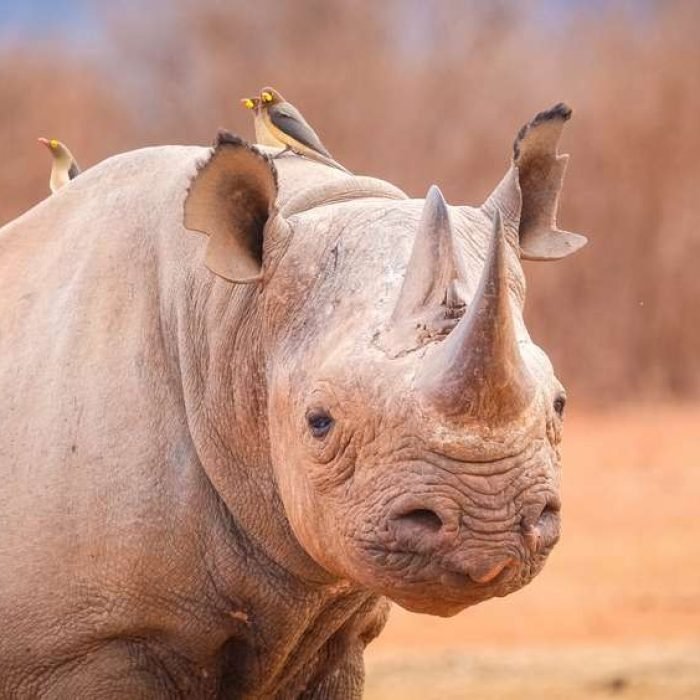South-Central Black Rhino
( south-central hook-lipped rhinoceros or the lesser black rhino )
- Diceros bicornis minor
- IUCN Status: Critically Endangered
- Trend: stable

General Information
The south-central black rhinoceros (Diceros bicornis minor), also known as the south-central hook-lipped rhinoceros or the lesser black rhino, is a subspecies of the black rhinoceros.
Although it is the most numerous of the black rhinoceros subspecies, it is nevertheless designated as critically endangered on the IUCN Red List. Like other black rhinoceros subspecies, it has a prehensile lip and lives in savanna habitat.
Description
The south-central black rhinoceros has a prehensile lip with a grey to brown hide which is wrinkled like forged steel, with a prehensile, hooked upper lip perfect for stripping leaves from thorny branches. The ears—large, cup-shaped, and endlessly mobile—can pivot independently like satellite dishes, while small, deep-set eyes hint at its reliance on smell and hearing over vision. Unlike the square-lipped white rhino, its angular head slopes sharply downward, an adaptation for navigating dense thickets. The tail ends in a stiff brush of hair, often caked with mud from its wallowing pits.
Fun Facts
The south-central black rhinoceros is Africa’s smaller, more elusive black rhino. They have an incredible 180-degree hearing and 5 km scent detection making them nearly invisible until it’s too late. Unlike the white rhinos, these solitary browsers carve hidden tunnels through thorny thickets, leaving behind distinctive “rhino latrines” that serve as olfactory message boards. Their two horns – made of keratin like human hair – grow up to 5 cm annually, with the front horn often worn down from scraping bark. Surprisingly agile, they can pivot on their front legs like a tank and charge at 55km/h through vegetation that would stop most vehicles. Zambia’s survivors in North Luangwa have developed nocturnal habits to avoid poachers, while their complex vocalizations include ultrasonic sounds humans can’t hear. Conservationists identify individuals by unique horn shapes and ear notches.
Distribution & Habitat
The south-central black rhinoceros once ranged from western and southern Tanzania, through Malawi, Zambia, Zimbabwe, and Mozambique, all the way to northern and eastern South Africa. It is also thought to have inhabited the southern part of the Democratic Republic of the Congo, as well as northern Angola and eastern Botswana. Today, however, its population stronghold is in northeastern South Africa, Namibia and to a lesser extent in Zimbabwe, with even smaller numbers in Eswatini’s Mkhaya Game Reserve. At one time, the south-central black rhino had disappeared from Malawi, Botswana, and Zambia, but it has since been reintroduced into those countries. Whether there are any in Mozambique is uncertain, but at least one specimen has been seen there since 2008.













